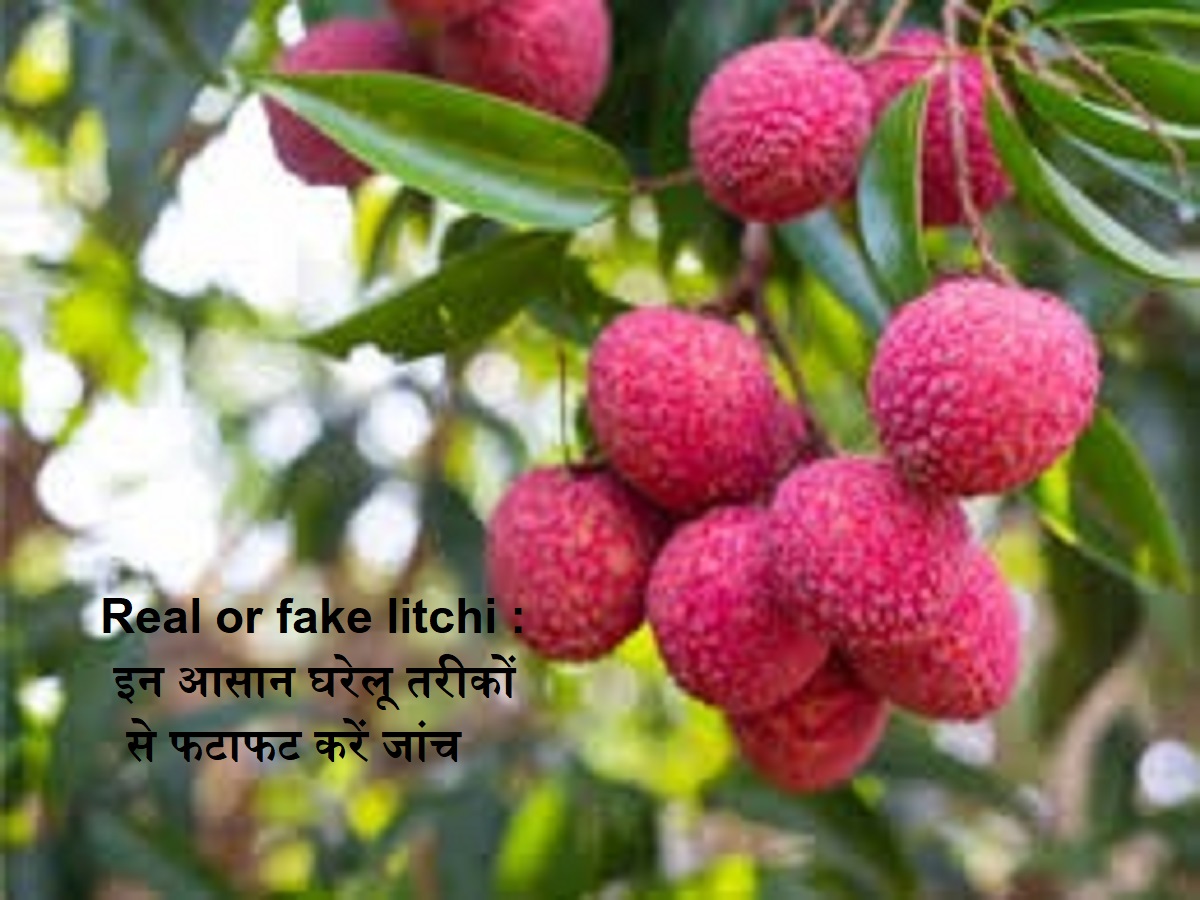News India Live, Digital Desk: Real or fake ighty: Summer is a season of juicy, delicious leechesis, but sometimes sweet taste can also be bitter. With rising consumer demand, some vendors resort to artificially paint or chemical treatment to enhance the beauty and shelf life of the leachis. These fake leeches may look attractive, but they contain synthetic colors, wax or preservatives, which can damage your health. Therefore, it is more important to know how to differentiate between real and fake leaches – and the good news is that you can easily do it at home.
1. Check the color: the real litchi is not completely red
The skin color of natural lychee is slightly uneven. You will often see a mixture of red, pink, green and brown shades on the surface. If your litchi looks unnaturally bright, a uniform red or highly shiny, it is very likely that they are artificially painted to attract buyers. The real litchi is never completely neon or dark red.
The peel of the real lychee is rough, the texture, which has a bulge and it looks somewhat like leather. If the fruit touches the fruit, it seems suspicious, wax -like or slippery, it may have been coated with wax or oil to show fresh – a common idea of adulteration in fruits.
3. Try Water Testing: Let Science speak
Pour some leecheses into a bowl of clean water. Real, naturally cooked leeches will either be drowned or swimmed without changing the color of water. If the water starts turning red or pink or fruits start floating strangely, it can be a sign of the use of external colors or chemicals.
Smell 4 fruits: Chemical smell is a sign of a danger
Fresh litchi has a light, fruit -like, sweet aroma. If litchi has a sharp, chemical -like or unpleasant odor, it is a strong sign of chemical contact. Artificially treated litchi may have an odor of paint, kerosene or synthetic preservatives – which are harmful when all are harmful.
5. Cut and see: What is inside, it matters
Cut the litchi and see its pulp. The inner part of the real litchi will be white, transparent, juicy and aromatic. If the pulp is red or dry and colorless, then the fruit may have come in contact with colors or other artificial substances. Also, avoid fruits that look unnaturally hard or rubber from inside.
6. Test by rubbing with cotton or tissue: easy and quick
Take a wet tissue or cotton ball and gently rub the litchi peel. If the tissue colors, the fruit is likely to have synthetic color. This simple method can help you identify fake litchi before eating, especially if you bought them in bulk.
7. Beware of off-season litchi
Lychee naturally grows in the summer months, usually from May to July in India. If you see litchi in the off-season, they are more likely to be stored or artificially cooked with chemicals. Always try to buy seasonal yield – it is safe, delicious and more nutritious.
8. Buy from reliable sources and be informed
The safest way to avoid fake litchi is to buy from reputed fruit vendors, local farmers’ markets or certified biological vendors. Reliable sources are less likely to use unsafe methods. In addition, stay updated on food security alert in your area and do not hesitate to raise awareness between friends and family.
Choose security with every person
Lychee is a delicious dish, but like all foods, they should also be carefully eaten as they are at risk of adulteration. These simple tests and tests can help you ensure that you are eating fresh, natural lychee free from harmful chemicals. Protecting your family’s health begins with what you bring home from the market – and information is your first security.
This 2 rupee note kept in pocket can make you a millionaire! If there is ‘786’ number, then know how to earn 5 lakhs by selling
